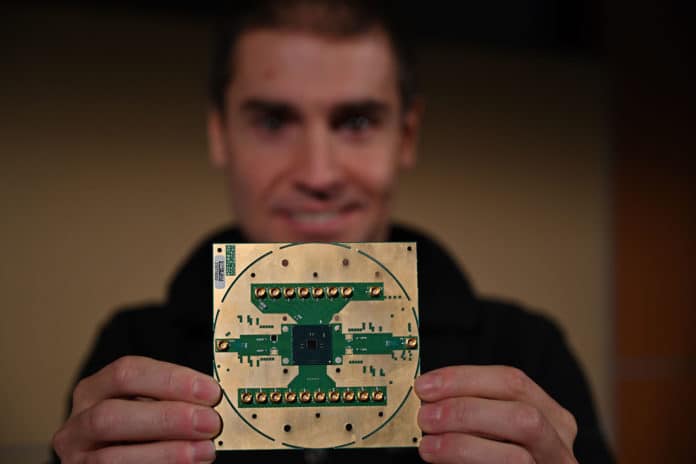The quantum computer is still in its infancy. Google, IBM, and Microsoft, among others, are currently working on the technology that makes computing power exponentially greater than traditional computers. The Intel chip should make that marathon easier by simplifying the management of qubits (units of quantum information).
Intel announced its new SoC (System on Chip) named Horse Ridge, in reference to one of the coldest regions in the state of Oregon. The chip is named after its function, as it will be used to more efficiently control the cooling of quantum computers.
According to Intel, the new cryogenic control chip is designed to reduce the complexity of quantum circuit control and management. The device is the size of a coffee cup coaster and replaces large external units typically needed to control qubits, which use subatomic particles to encode or more values at the same time.
It was produced using Intel’s 22nm FinFET technology in collaboration with Intel’s research partners at QuTech. The new Intel Horse Ridge chip will target what it believes to be a major roadblock to commercially viable quantum computing – electronic controls and interconnections.
Horse Ridge is highly integrated, mixed-signal SoC that brings qubit controls to the quantum cooler – bringing them as close as possible to the qubits themselves. It effectively reduces the complexity of quantum control engineering from hundreds of cables entering and leaving a refrigerator to a single unified package operating near the quantum device.
SoC will act as a radio frequency processor and thus simplify the control of multiple qubits within the cryogenic cooler. Horse Ridge is programmed with instructions that correspond to basic qubit operations. It translates these instructions into electromagnetic microwave pulses that can manipulate qubit status.
It is also a chip that can operate at cryogenic temperatures 4 degrees Kelvin, about -269.15 degrees Celsius. A vital component of quantum computer today is a cooler capable of keeping qubits operating at temperatures close to absolute zero – 0K (zero on the Kelvin scale) or -273.15 degrees Celsius. In the case of silicon spin qubits, which is what Intel is working on, they have certain properties that can allow them to work at temperatures around 1K or -272.15 degrees Celsius.
Thus, Intel’s goal with Horse Ridge is to operate cryogenic controls and silicon spin qubits at the same temperature. This will help reduce the cooling needs for quantum computers. Consequently, this would be a step in the right direction to address one of the biggest obstacles to making quantum computing commercially viable.
